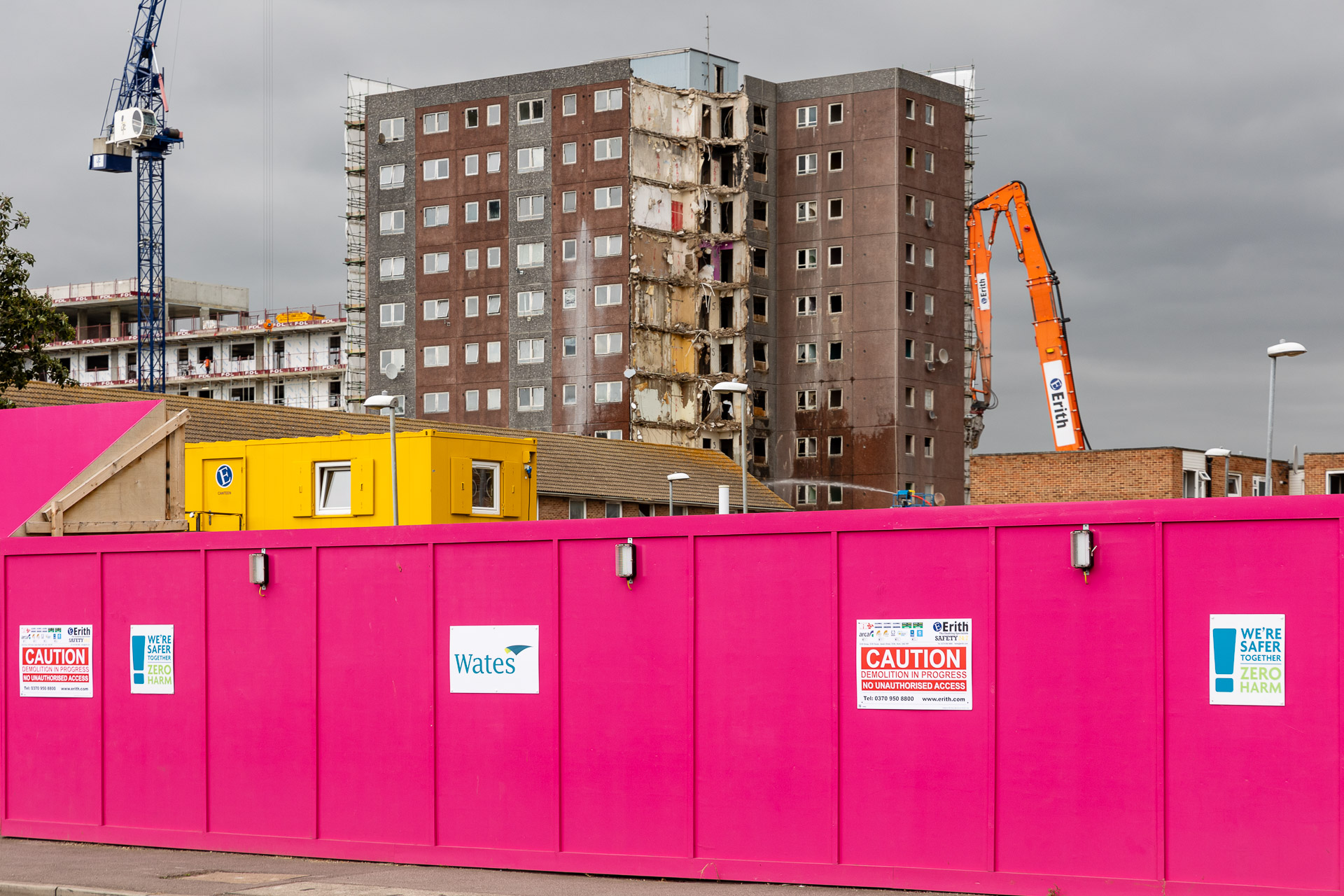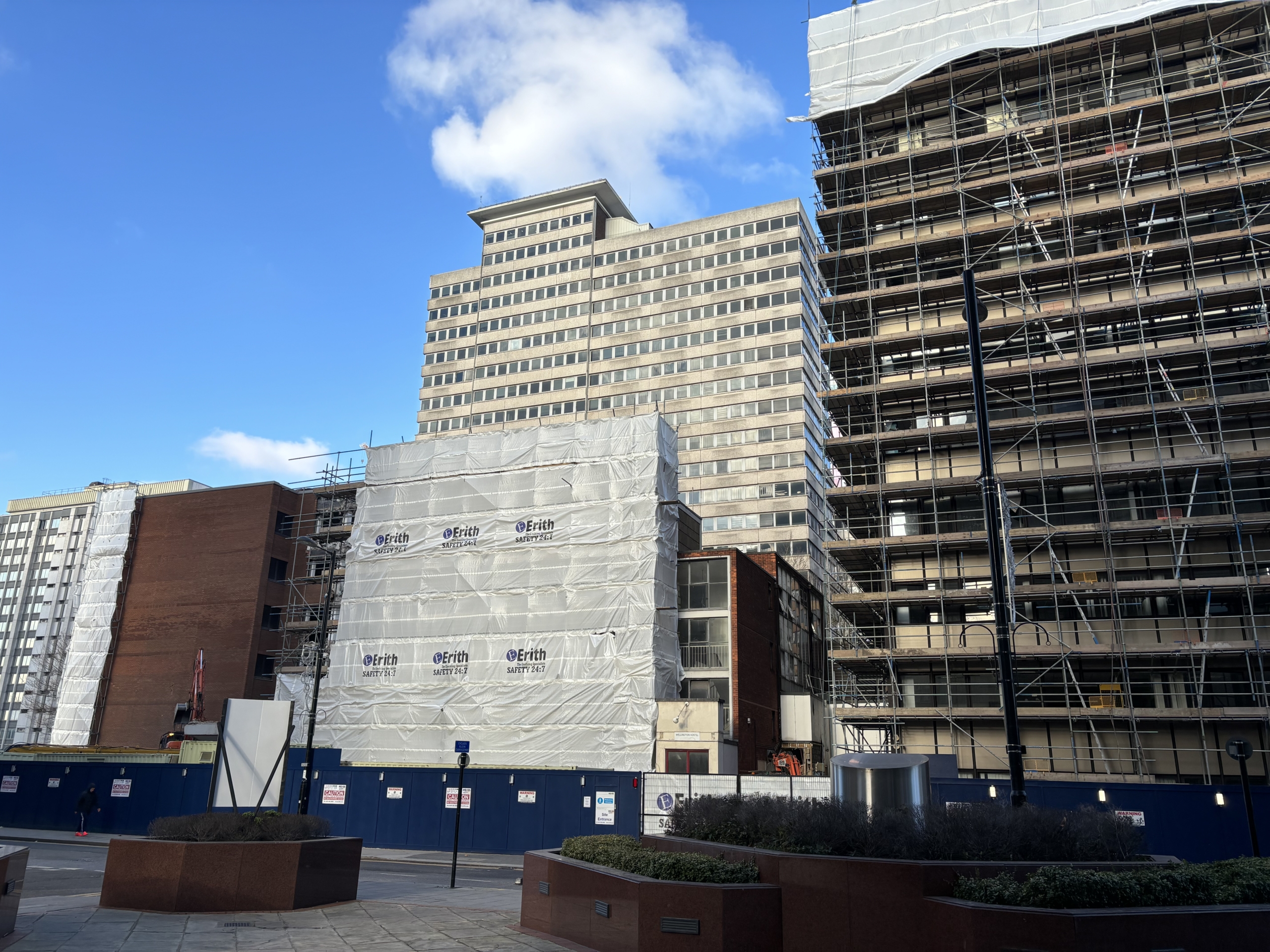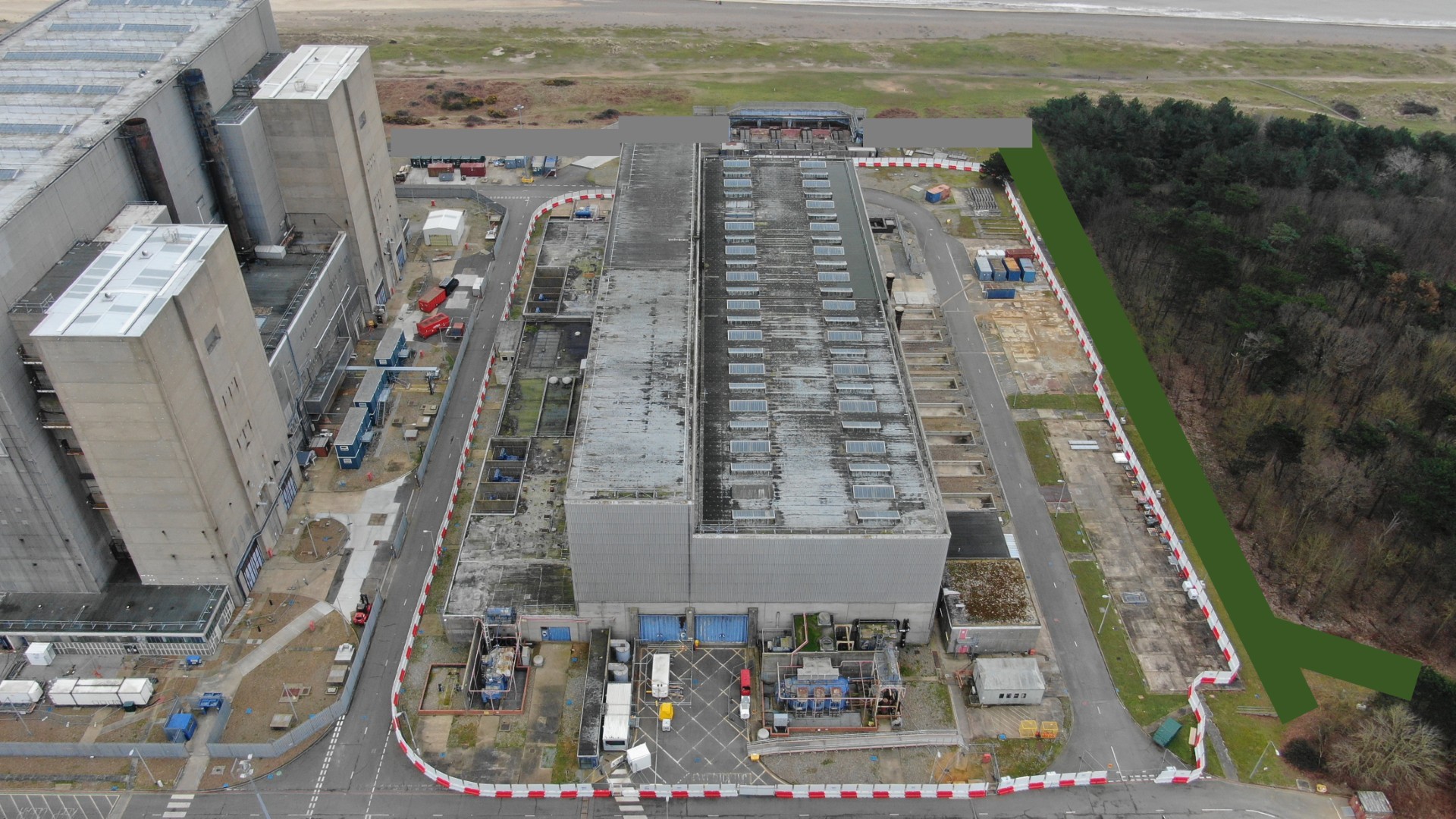
Sizewell Turbine Hall
In 2023, NRS awarded Erith the contract for the hazard removal, soft strip, de-plant, and demolition of the Turbine Hall complex, including associated cable tunnels and support structures. Operating under an NEC Option C target cost contract as the Principal Contractor, we were tasked with demolishing and clearing the site of all structures down to the top of the lowest ground-bearing slab.
The enabling works required the removal and disposal of all asbestos-containing materials from the plant and structure, as well as all hazardous materials and liquids from the plant. This was followed by the de-planting and removal of all plant and equipment from the site. The demolition of the Turbine Hall structure to ground level, including the removal of any arisings, was a significant part of the project. Additionally, all associated structures were demolished to ground level, with backfilling of basement area gullies, trenches, and voids, and sealing of culverts and tunnels. A key structural consideration was the turbine house itself—a steel-framed, aluminum-clad building 380 feet long, 160 feet wide, and 90 feet high, with a reinforced concrete basement 26 feet deep. The foundations were designed to withstand a maximum bearing pressure of 3 tons per square foot.

60,000
sq ft of turbine hall
5,500
tonnes of metal recycled
35.6
miles of cabling removed
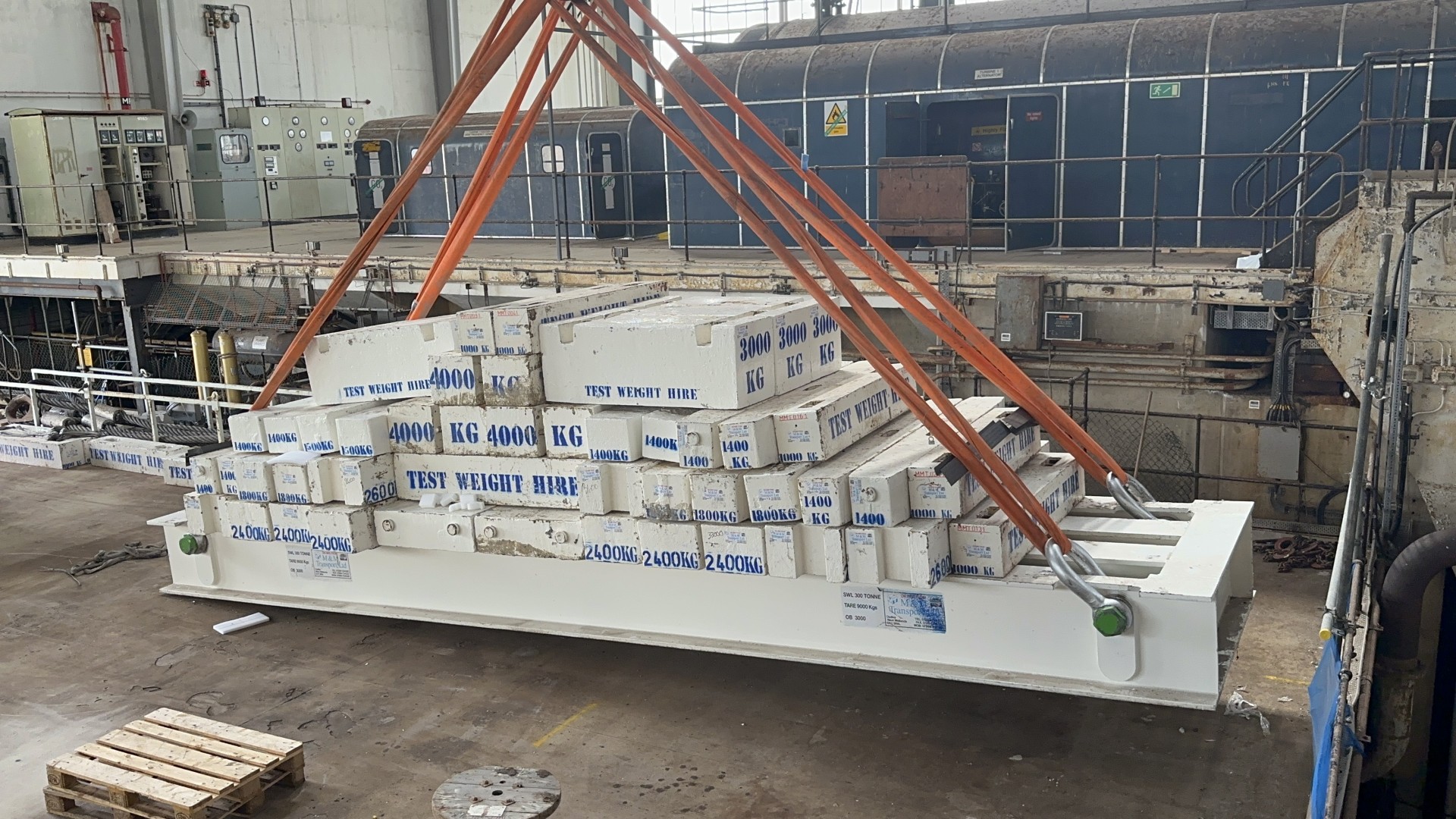
The Turbine Hall was a central feature of the site, housing two 324.75 MW turbo-alternators. The area included multiple levels: the Basement, Mezzanine floor, Operating floor, Deaerator Floor, and the Turbine House roof. During its operation, the structure accommodated an extensive array of plant and equipment. On the Basement and Operating Floor, this included High Pressure (HP) Cylinders, HP Steam Chests, Low Pressure (LP) Cylinders, Re-heaters for both HP & LP Heaters, and a complex network of steam and condensate pipework with associated valves and flanges. The Condensers, Turbines, Steam Stop Valves, and Turbine Reheaters were also located here, along with Domestic Heating pipework, Extraction Pumps, Main Boiler Feed Pumps, Stator Water pumps, Mulsifyre Pumps and tanks, Lube and Seal Oil tanks, and various drains and water supply pipework.
Given the nature of the structure, we have deployed a range of methodologies to ensure the structures were carefully deconstructed within the footprint of the buildings. Methodologies included sequential controlled top-down demolition, mechanical methods and demolition utilising an ultra-high reach excavator – all of which were undertaken to pave way for a £400M mixed used development comprising of residential, office and retail premises.
The Operating Floor to Roof included the Control Room/Gauge Boards, Deaerator vessels, and associated pipework and valves, along with Turbines, Stop Valves, Turbine Reheaters, Turbine Feed Heaters, Alternators, Exciters, Generators, Crossover Headers, and the electrical boards and supplies. The Turbine House also featured Overhead Cranes and Buzz Bars, with additional cranes and buzz bars in the Mechanical Annex.
In conjunction with the Turbine Hall deplant and demolition, we were also responsible for the removal of two legacy scaffold structures within the RCA, under the same contract. These scaffold structures, erected in 2010, were condemned and decommissioned in 2017 due to multiple scaffold board failures.
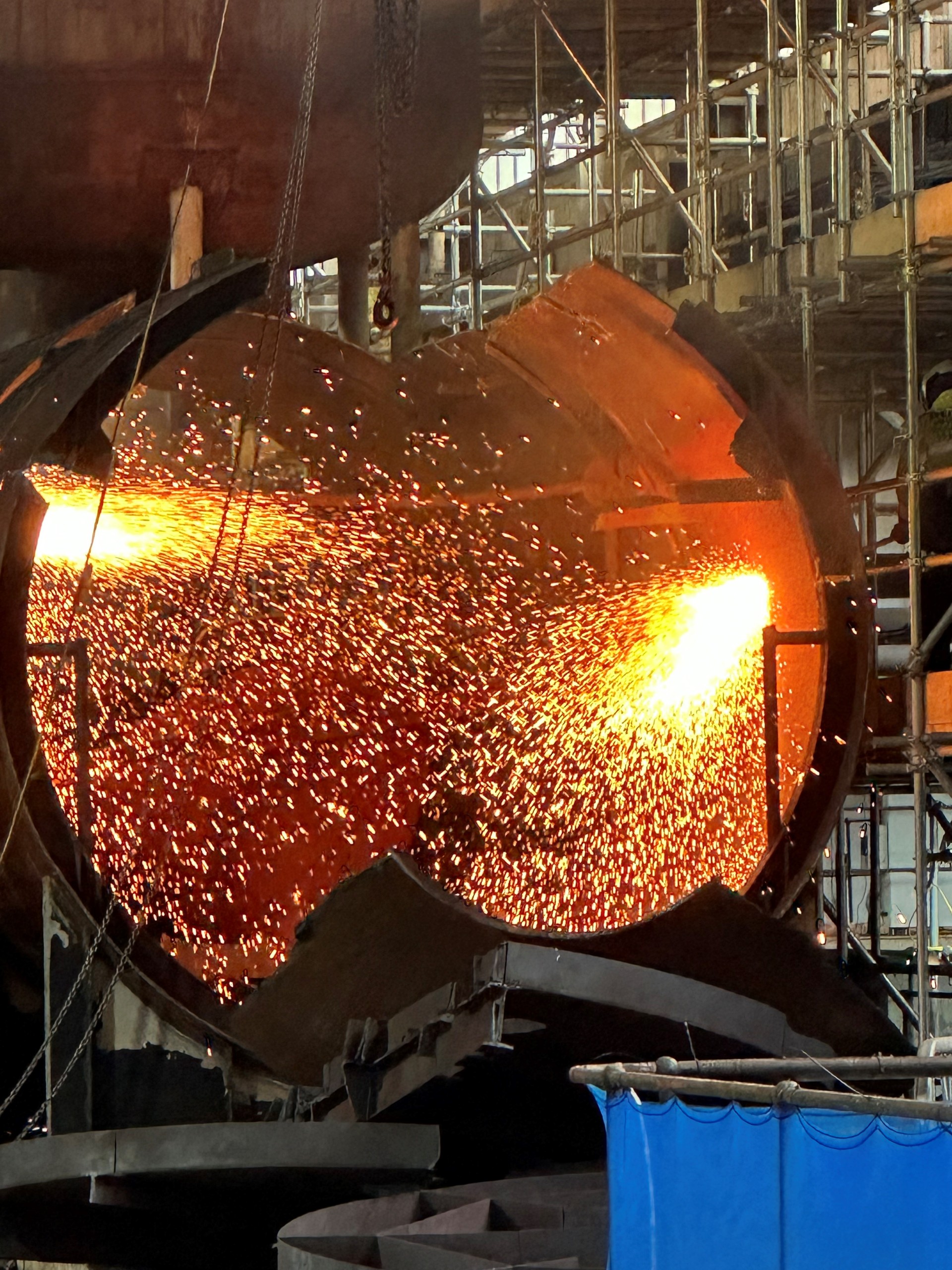
Operating within a radiologically controlled and managed environment, where asbestos presence was known, we meticulously dismantled the condemned scaffold structures. This task was particularly challenging due to the complexity and congestion of the boiler cell, which included boilers, vessels, pipework, plant and equipment, electrical installations, cable trays, open mesh floor gratings, and staircases, many of which were insulated with asbestos-containing materials. Additionally, the entire area surrounding the Boiler cells was potentially asbestos-contaminated. The project’s end goal was to return the building in a condition that allows for future access under a controlled and managed arrangement.
This comprehensive project highlights the complexity and scale of the Turbine Hall’s operations, which Erith successfully navigated, ensuring a thorough and safe execution of the project in preparation for the next stages of the sites decommissioning.

